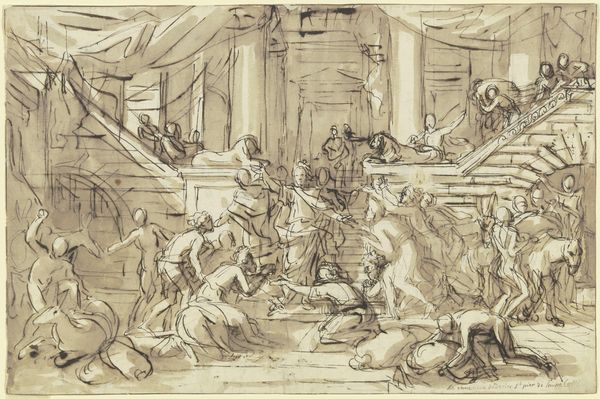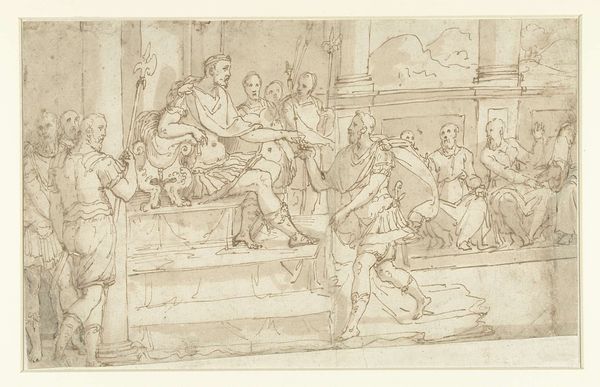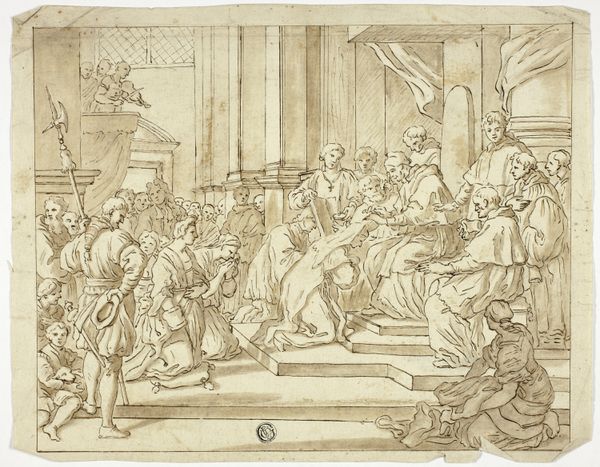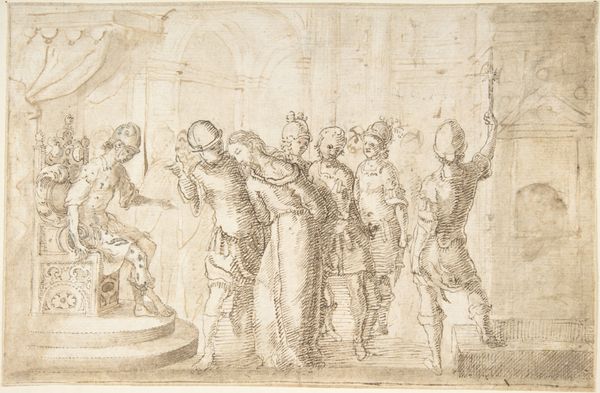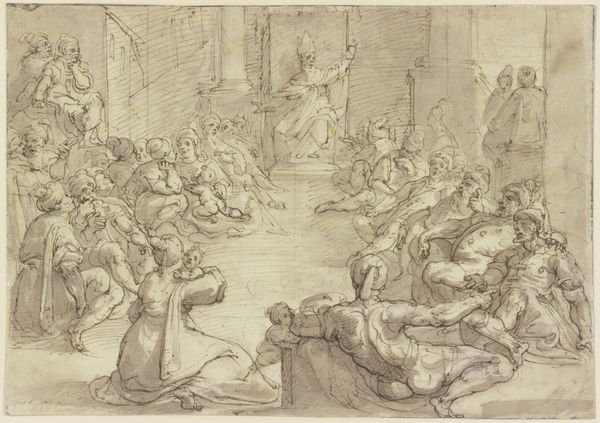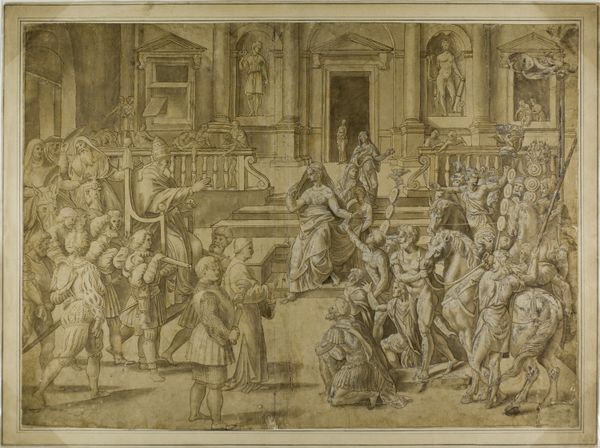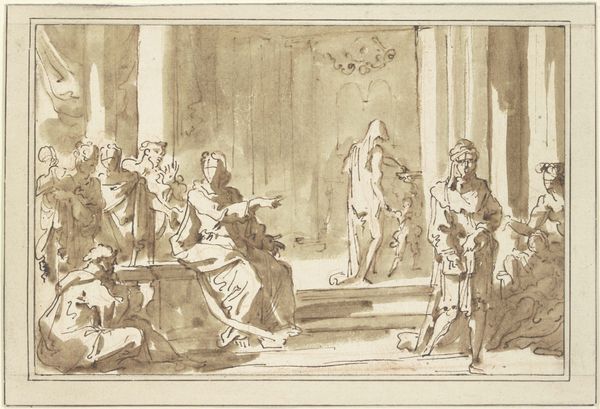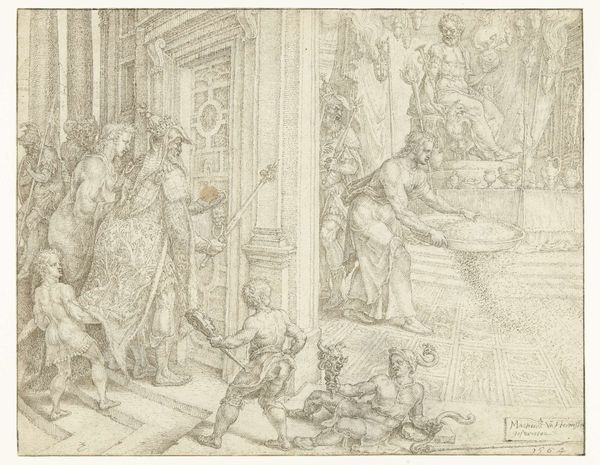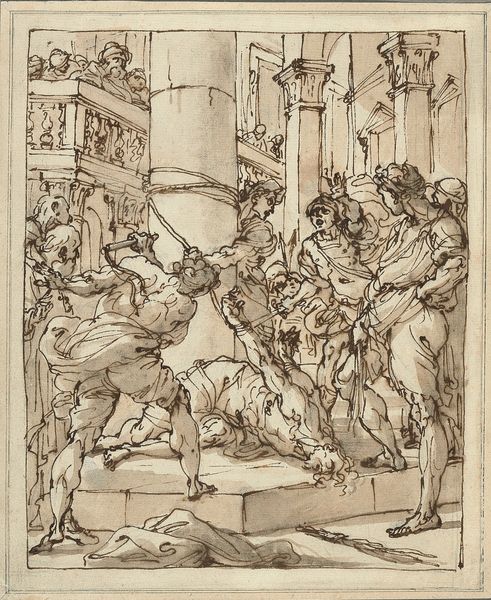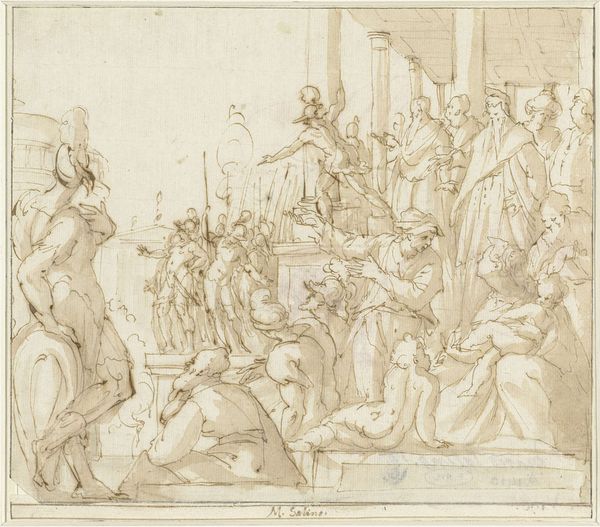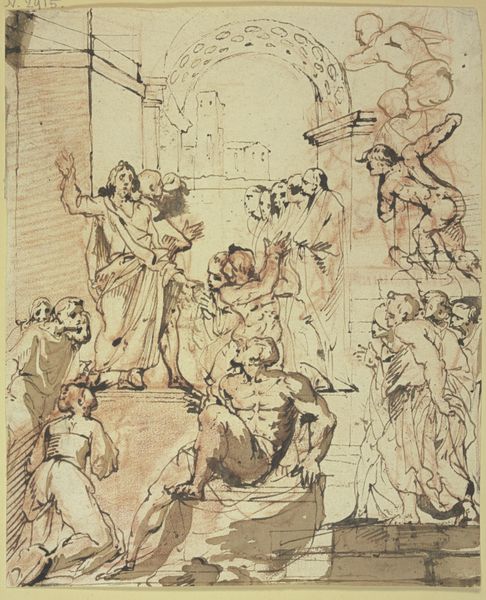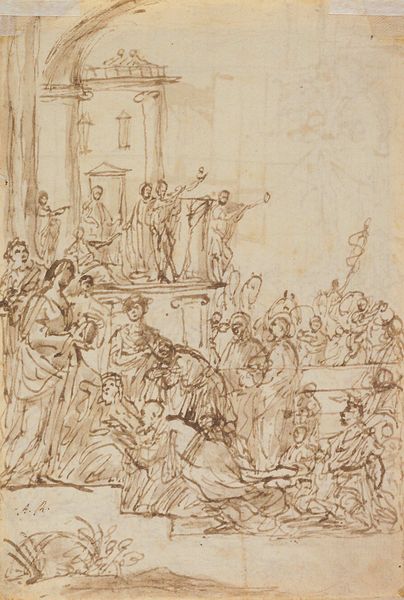
drawing, ink, pencil, chalk
#
drawing
#
high-renaissance
#
narrative-art
#
figuration
#
ink
#
pencil drawing
#
pencil
#
13_16th-century
#
chalk
#
history-painting
Copyright: Public Domain
Editor: Here we have Luca Cambiaso's "The Martyrdom of St. Lawrence," a drawing rendered in ink, chalk, and pencil. It’s incredibly graphic. I'm struck by how actively violent it is, especially knowing the piece depicts religious martyrdom. What’s your read on it? Curator: I see a powerful statement about the intersection of faith, power, and social injustice. Cambiaso doesn’t shy away from showing us the brutality inflicted upon St. Lawrence, but it's crucial to examine the context. The High Renaissance was a period of intense religious and political upheaval. How does this depiction of martyrdom resonate with broader concerns about religious persecution throughout history? Editor: I guess it serves as a harsh reminder of the violence enacted throughout history against those who didn't conform. Is that powerful man watching also important to note? Curator: Absolutely. That figure embodies the institutional power structures complicit in such acts. The drawing is not merely about the suffering of an individual, but also about systemic oppression and abuse of authority. Look at the figures surrounding St. Lawrence - who do they represent and what do they gain from perpetuating violence? Consider the social implications of such a brutal public display during that time. What message was intended for its viewers? Editor: So the drawing works as a multi-layered commentary, highlighting both the immediate act of violence and the larger systems that enable it. It’s more than just religious art; it’s a political statement too. Curator: Precisely. And this pushes us to question, even now, whose stories are valorized and whose are silenced, and how art might become a catalyst for social change. Editor: I’ll definitely remember that when looking at historical art going forward. Thanks for making me think. Curator: It was a good learning opportunity for us both. Thanks for being receptive.
Comments
No comments
Be the first to comment and join the conversation on the ultimate creative platform.
